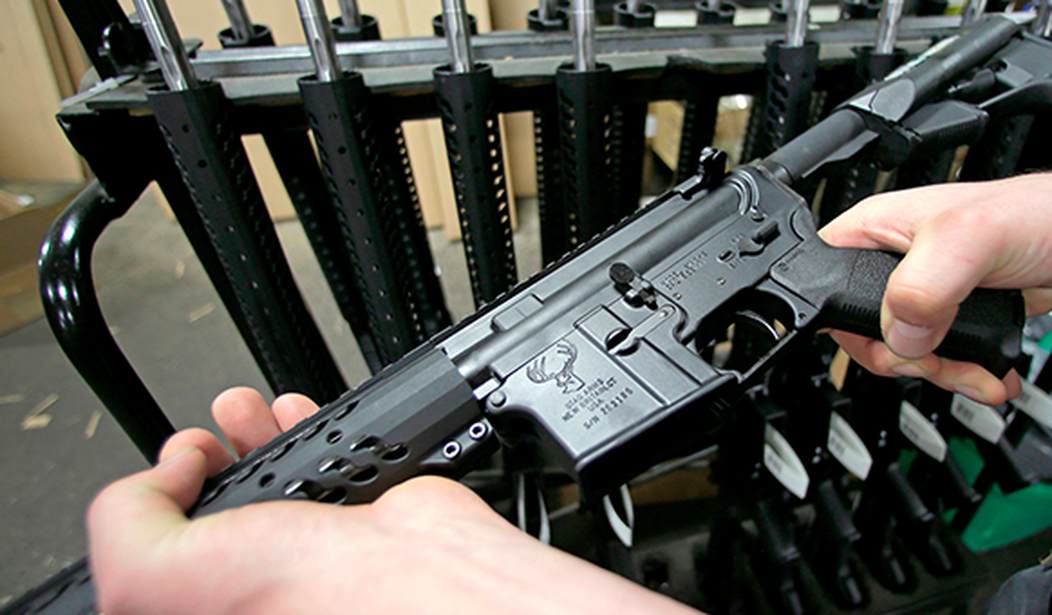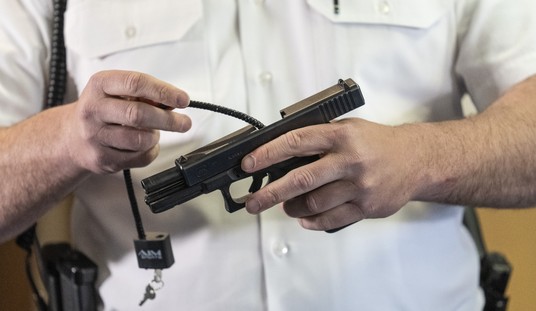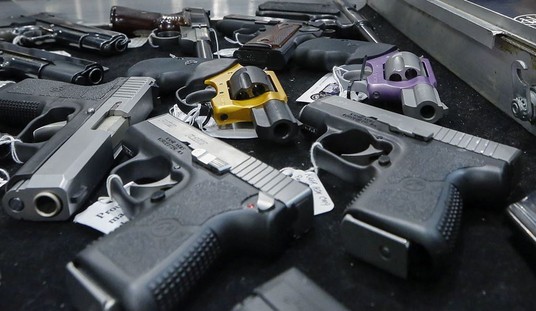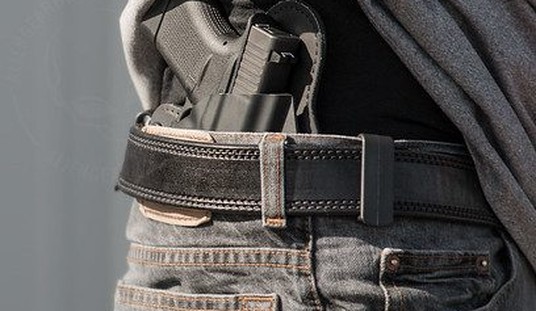New Jersey Attorney General Matthew Platkin has responded to the Department of Justice's brief in support of a challenge to the state's ban on so-called assault weapons and large capacity magazines, and as you might expect, it's full of duplicitous arguments and outright falsehoods.
In the brief, Platkin urges the Third Circuit not to vacate a three-judge panel's decision upholding the ban and rehear the case en banc, but his rationale is at times downright dumbfounding.
New Jersey argues a reason to uphold its ban is because the federal government had a ban too.
— SAF (@2AFDN) October 9, 2025
But that's a weird argument, because that ban expired and was never reimplemented federally, because it was too unpopular and failed to meet its promised safety goals anyway. pic.twitter.com/UBsgOr1NHN
Not to mention that ban was put in place and expired years before the Supreme Court affirmed the Second Amendment protects an individual right to keep and bear arms in Heller.
Platkin's main argument, though, is that there's no reason for the Third Circuit to split with other appellate courts that have upheld similar bans. Justice Brett Kavanaugh has already indicated that the Court is likely going to take up an AWB "in a term or two", but a circuit court split increases the likelihood of that happening. Platkin obviously wants to keep New Jersey's ban in place, but he and other anti-gunners are also desperate to keep SCOTUS away from a challenge to a ban on commonly-owned semi-automatic firearms.
The Federal Government, echoing the challengers, errs in contending that the exclusive justification for a firearms regulation turns on the firearm’s circulation. No court of appeals has ever agreed with the challengers that the volume of a restricted item in circulation is the dispositive constitutional test. And for good reason: this test is ahistorical; leads to inviolable protection for machineguns; is inherently illogical and produces an arms race between manufacturers and officials; is inconsistent with the treatment of other constitutional rights; and finds no support from precedent. The Federal Government’s efforts to rehabilitate this popularity test—including to argue that machineguns can be regulated on its view—do not pass scrutiny.
Instead, there has always existed a distinct historical tradition, one the Federal Government’s brief does not seriously grapple with but that each other circuit to date has identified, that permits the regulation of unusually dangerous firearms—that is, weapons whose features are disproportionately dangerous compared to their civilian self-defense uses. That regulatory tradition dates back to England, was endorsed by sources like Blackstone, and has persisted at all periods in American history—from the regulation of Bowie knives, to slungshots, to machineguns, to assault weapons and LCMs. The Federal Government ignores almost entirely Bruen’s command to engage in this historical review to divine the “principles that underpin our regulatory tradition.” United States v. Rahimi, 602 U.S. 680, 692 (2024). Because the Federal Government fails to seriously engage with this history, its brief ignores the tradition of regulating widely owned, yet unusually dangerous, weapons. But that tradition captures the extraordinary dangers assault weapons and LCMs pose.
What the Supreme Court has said is that bearable arms that are in common use for lawful purposes are prima facie protected by the Second Amendment. Those arms that are "dangerous and unusual", on the other hand are not. While the Supreme Court has noted that self-defense is the primary purpose for the Second Amendment, it's obviously not the only lawful purpose for firearms. Hunting, recreational shooting, and even collecting are all activities protected by the right to keep and bear arms, so determining whether or not AR-15s and other semi-automatic rifles doesn't hinge on how many of them are actively used in self-defense or defense of others.
New Jersey seems especially angry at the prospect of common use actually meaning common use.
— SAF (@2AFDN) October 9, 2025
Tough. The Supreme Court has confirmed the popularity approach, and in Bruen it even confirmed that popularity can actually change a once-bannable arm into a protected arm:
"Whatever… pic.twitter.com/fQmwUL7BhM
"Whatever the likelihood that handguns were considered 'dangerous and unusual' during the colonial period, they are indisputably in 'common use' for self-defense today. . .[colonials laws restricting handguns] provide no justification for laws restricting the public carry of weapons that are unquestionably in common use today."
That's from Justice Alito's majority opinion in Bruen, and as the Second Amendment Foundation notes, Platkin's argument is entirely at odds with what the Supreme Court has said about arms that are in common use.
Now, Platkin is correct when he argues that multiple appellate courts have twisted "dangerous and unusual" to mean "unusually dangerous", but there's no reason for the Third Circuit to add to those errors.
SAF says that Platkin also makes a fair point by arguing that the "popularity" test is circular, "because the extent of any item's circulation turns in no small part on its lawfulness." But SAF adds that while the Court "may indeed need to look at what happens when the government preemptively bans a new type of arm before it can become popular [in a future case]... that's a hypothetical issue for another day. Whatever circularity concerns may exist, the arms at issue in THIS case are undoubtedly extremely popular."
Not to mention that the "unusually dangerous" offered by Platkin (and several appellate courts) is at least equally flawed, if not more so. What is the "normal" amount of dangerous when it comes to a firearm? Was a Kentucky long rifle unusually dangerous compared to a musket in 1791? Was a revolver unusually dangerous compared to a cap and ball pistol in the 1840s? Were breech-loading rifles considered unusually dangerous compared to muzzleloading rifles? Were lever-action rifles considered unusually dangerous compared to breech-loading rifles?
If an arm can be banned because it's "unusually dangerous", there must be a "usually dangerous" standard that it violates, right? Platkin's definition is "weapons whose features are disproportionately dangerous compared to their civilian self-defense uses," but that only adds another question- what is "disproportionately dangerous" and who decides if a particular firearm meets that definition? Platkin complains that the common use test is ahistorical, but his own test is untethered to both history and logic.
I'd like to see the Third Circuit take the challenges to New Jersey's gun and magazine bans en banc, but if the court takes a pass then these lawsuits will reach the Supreme Court even sooner. Would it be better to have a circuit court split on the issue? Sure, but I don't think it's absolutely necessary for the Court to follow its own guidance in Heller and Bruen and strike down these bans on commonly owned arms that are used for a variety of lawful purposes.








